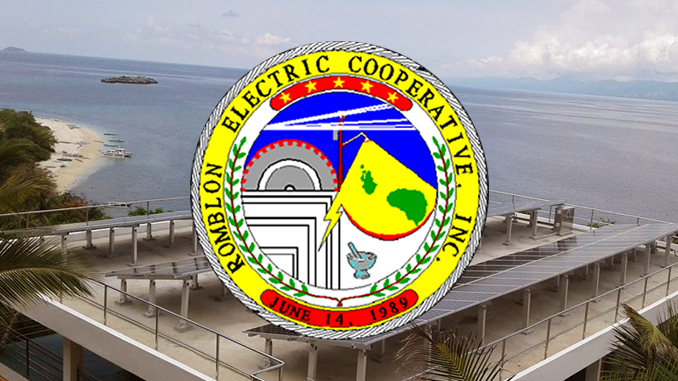An electric cooperative (EC) in Romblon has been making serious headway in its transition from conventional to renewable energy, showing everyone that not only profit-driven companies are capable of going full blast on this remarkable shift but service-oriented utilities, too.
Engr. Rene Fajilagutan, general manager of the Romblon Electric Cooperative, Inc. (ROMELCO) has revealed to the National Electrification Administration (NEA) some of the ongoing projects they have initiated to make their island’s energy mix predominantly clean and inexhaustible.
In partnership with the Japanese government and its firms, ROMELCO has recently started developing three units of wind turbine generators in Barangays Agnay and Bagacay to augment its power distribution capacity for the benefit of its nearly 10,000 member-consumer-owners (MCOs) in Romblon Island.
“We are transitioning from conventional to renewable energy. That is our goal. At the same time, we reduce the cost of electricity… We have a master plan that by 2020, we are 90 percent renewable,” Fajilagutan said.
Fifty percent of the project was financed through a grant from the Ministry of the Environment of Japan and the other half was shouldered by the Japanese manufacturer, Komaihaltec, Inc. for a combined investment of PhP 242 million.
Construction of the wind turbines started in February and they are expected to be completed this November. They will have a total capacity of 900 kilowatts (KW). Once operational, these will be leased to ROMELCO for four years at PhP 6.19 per kilowatt hour (kWh) without value added taxes.
Fajilagutan estimates a sharp decrease in their power rates with this development, thus they are very bullish about pursuing other similar projects. Aside from wind energy, he said ROMELCO is going to tap biomass resources through a two-megawatt (2 MW) plant that is also in the pipeline.
“We are in the process of awarding consultancy services for our 2 MW biomass here in Romblon. We are planning to develop it phase by phase; one megawatt first, then another megawatt,” the ROMELCO executive said. It will hopefully start running by 2019.
Fajilagutan said they are going to use anaerobic digestion technology for it. As for fuel, they are going to put up dedicated energy crops. In fact, they have already contracted almost 350 hectares of land for lease to serve as nursery, he said.
What’s more, since the island of Romblon is largely surrounded by water, ROMELCO is going to harness its power to create wave and tidal energies for the island municipalities and coves under its coverage area.
Fajilagutan said they are currently in talks with an Israeli company, which will help them develop the structure to convert ocean waves into energy. ROMELCO plans to test this technology in Banton Island to back up another hybrid solar power plant it aims to build in the area.
“It’s promising. I have already studied the technology. The pressure will be stored in a tank and that pressure combined with nitrogen gas will turn (the generator). Even if the sea is calm, it will keep spinning. The release of pressure is controlled,” he explained.
ROMELCO is also going to put up additional mini-hydro power plants to augment its existing Cantingas hydropower project in Sibuyan Island, which is already serving electricity at an average power rate of P5.2107 per kWh since 2009.
The current rate will even be pared down to less than two pesos per kilowatt hour beginning 2022 once ROMELCO pays its loans and takes full ownership of the facility. That is the advantage if the electric cooperative has control over power generation,” Fajilagutan said.
With these projects in the works, ROMELCO is well on its way to meet the growing energy demand of consumers in its franchise area, especially considering its recent acquisition of a 2.5 MW diesel power plant as initial support to their small wind farm.
Fajilagutan said he finds the potential of these renewable energy investments “very exciting” because he believes this is where the future of power industry is headed. “They say it’s difficult but you can always find a way,” he said.
The forward-looking ROMELCO chief said leaders in the rural electrification sector must aggressively pursue renewable energy development amid tougher competition not only from the private sector but from digital forces that do not play by the rules.
“Our rivals today come not just from the private sector but the online vendors who are renting out systems. It’s like unconventional war, guerilla warfare, so to speak. They are using wily tactics and there are no rules. So we as leaders, decision makers, have to adjust,” Fajilagutan said.
He was referring to companies that are capitalizing on disruptive e-commerce industries to sell home energy systems directly to consumers, eliminating distribution utilities in the process.
Because technological advancements are moving at ridiculous pace these days, Fajilagutan said it behooves upon the ECs to keep innovating their strategies and be on their toes at all times lest they are really going to be left behind.
“We understand that the power industry is not created only for the ECs. There is competition, we get it. I just hope we can count on our state regulators to place us on equal footing with other market players,” he said.

